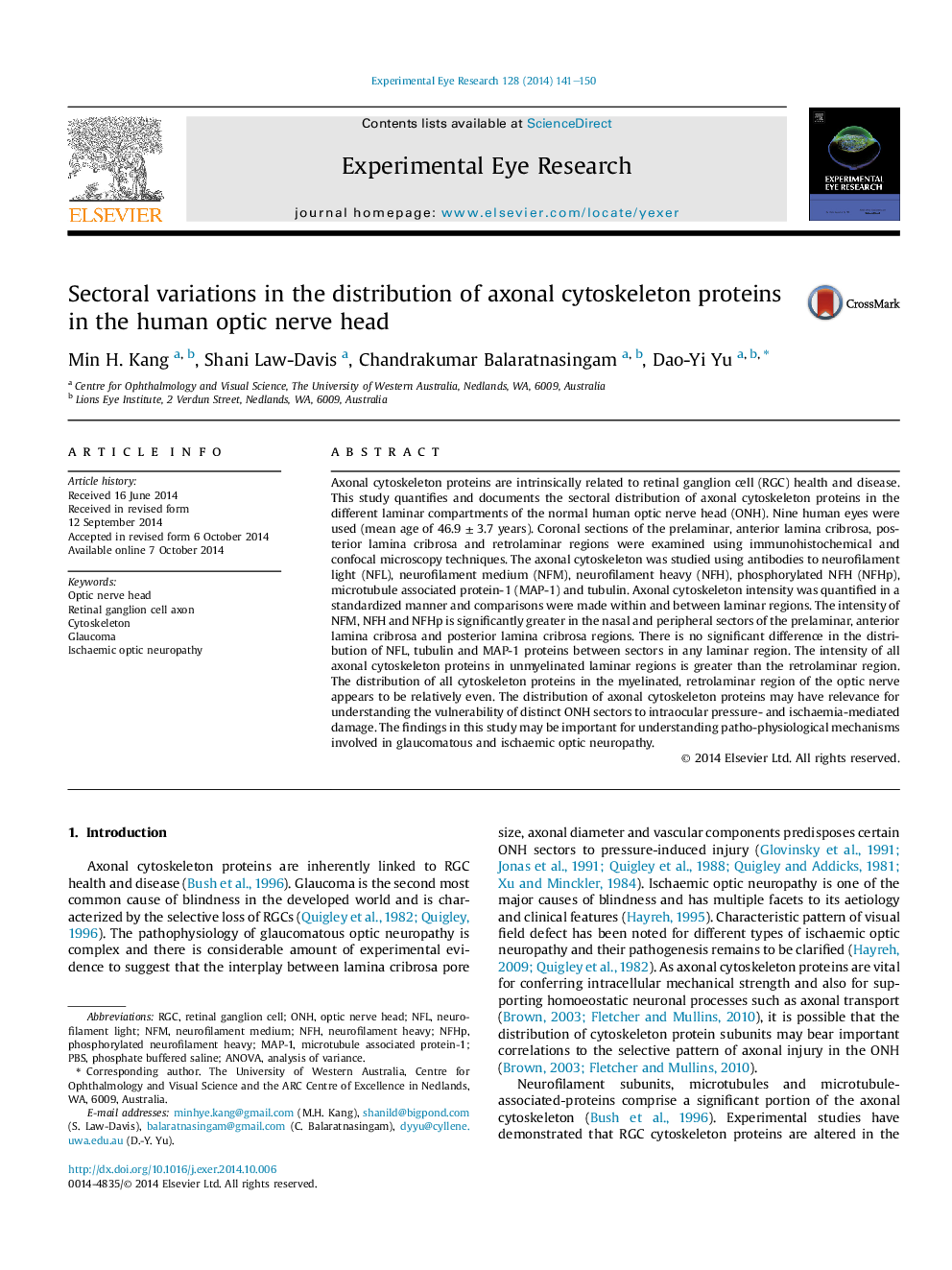| Article ID | Journal | Published Year | Pages | File Type |
|---|---|---|---|---|
| 6196769 | Experimental Eye Research | 2014 | 10 Pages |
â¢Sectoral distribution of axonal cytoskeleton in the anterior ONH is not uniform.â¢NFM, NFH and NFHp concentration is greater in the nasal and peripheral sectors.â¢Relationship between ONH cytoskeleton distribution and axon injury needs more study.
Axonal cytoskeleton proteins are intrinsically related to retinal ganglion cell (RGC) health and disease. This study quantifies and documents the sectoral distribution of axonal cytoskeleton proteins in the different laminar compartments of the normal human optic nerve head (ONH). Nine human eyes were used (mean age of 46.9 ± 3.7 years). Coronal sections of the prelaminar, anterior lamina cribrosa, posterior lamina cribrosa and retrolaminar regions were examined using immunohistochemical and confocal microscopy techniques. The axonal cytoskeleton was studied using antibodies to neurofilament light (NFL), neurofilament medium (NFM), neurofilament heavy (NFH), phosphorylated NFH (NFHp), microtubule associated protein-1 (MAP-1) and tubulin. Axonal cytoskeleton intensity was quantified in a standardized manner and comparisons were made within and between laminar regions. The intensity of NFM, NFH and NFHp is significantly greater in the nasal and peripheral sectors of the prelaminar, anterior lamina cribrosa and posterior lamina cribrosa regions. There is no significant difference in the distribution of NFL, tubulin and MAP-1 proteins between sectors in any laminar region. The intensity of all axonal cytoskeleton proteins in unmyelinated laminar regions is greater than the retrolaminar region. The distribution of all cytoskeleton proteins in the myelinated, retrolaminar region of the optic nerve appears to be relatively even. The distribution of axonal cytoskeleton proteins may have relevance for understanding the vulnerability of distinct ONH sectors to intraocular pressure- and ischaemia-mediated damage. The findings in this study may be important for understanding patho-physiological mechanisms involved in glaucomatous and ischaemic optic neuropathy.
